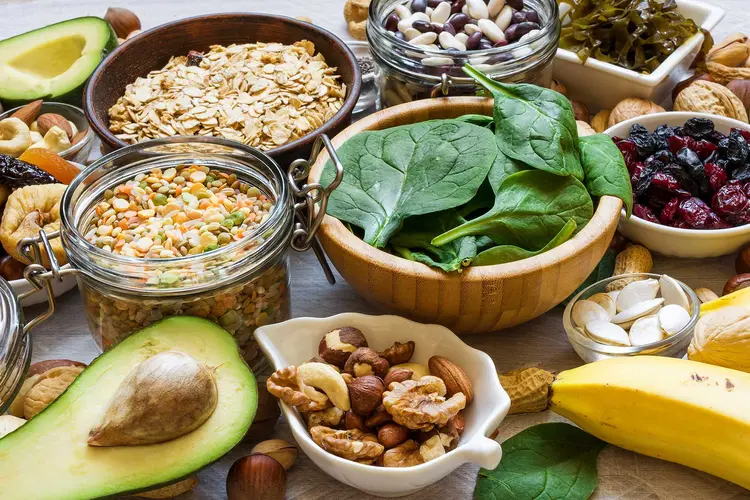If you’re like most people in the U.S., you likely don’t get enough potassium in your diet.
Like calcium and sodium, potassium is a mineral that’s found in some foods. Having the right amount of potassium in your diet helps to keep you healthy, so it’s crucial to eat plenty of potassium-rich foods.
Food Sources of Potassium
Many of the foods that you already eat contain potassium. The foods listed below are high in potassium. If you need to boost the amount of potassium in your diet, make healthy food choices by picking items below to add to your menu.
Many fresh fruits and vegetables are rich in potassium:
- Bananas, oranges, cantaloupe, honeydew, apricots, grapefruit (some dried fruits, such as prunes, raisins, and dates, are also high in potassium)
- Cooked spinach
- Cooked broccoli
- Potatoes
- Sweet potatoes
- Mushrooms
- Peas
- Cucumbers
- Zucchini
- Pumpkins
- Leafy greens
Juice from potassium-rich fruit is also a good choice:
- Orange juice
- Tomato juice
- Prune juice
- Apricot juice
- Grapefruit juice
Certain dairy products, such as milk and yogurt, are high in potassium (low-fat or fat-free is best).
Some fish contain potassium:
- Tuna
- Halibut
- Cod
- Trout
- Rockfish
Beans or legumes that are high in potassium include:
- Lima beans
- Pinto beans
- Kidney beans
- Soybeans
- Lentils
Other foods that are rich in potassium include:
- Salt substitutes (read labels to check potassium levels)
- Molasses
- Nuts
- Meat and poultry
- Brown and wild rice
- Bran cereal
- Whole-wheat bread and pasta
How Much You Need
Women should get 2,600mg and men should get 3,400mg of potassium every day. Most Americans don’t meet that goal.
Your needs might be different if you have kidney disease. Some people with kidney disease should get less potassium than the guidelines. If your kidneys don’t work well, too much potassium could stay in your body, which can cause nerve and muscle problems. If you have kidney disease and your doctor hasn’t already told you what your potassium limit is, ask about it.
On the Label?
For a long time, potassium wasn’t listed on the Nutrition Facts food labels of packaged food items. But in May 2016, the Nutrition Facts rules were changed, and potassium will now be listed. Companies will need to update their food labels on or before January 2020. That should make it easier for you to track your potassium intake for better health.
Why You Need Potassium
For starters, it helps your blood pressure. It does this in two different ways:
- First, with the aid of your kidneys, potassium helps remove extra sodium from your body through your urine. This is a good thing, because too much sodium can cause high blood pressure.
- Second, potassium helps the walls of your blood vessels to relax or loosen up. When they’re too tense or rigid, it can lead to high blood pressure, which can cause heart problems. Getting enough potassium is good for your heart.
You also need enough potassium for good muscle health -- so that your muscles can flex or contract the way they should. And your nerves need potassium so that they can work well.
